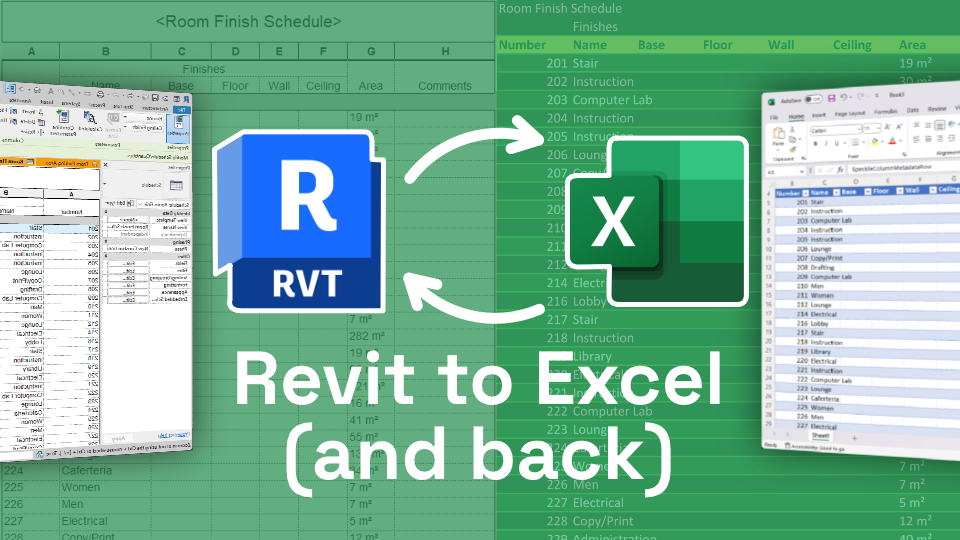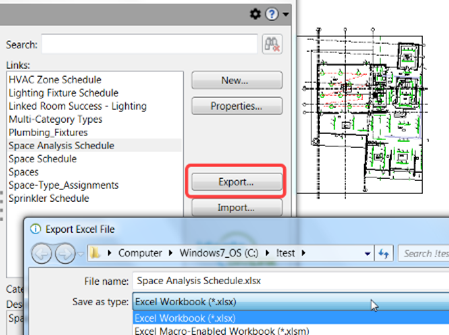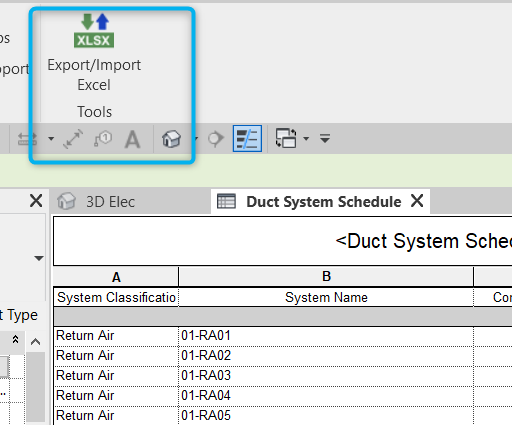Raise Your Style Game with Important Revit Add Ins
Wiki Article
Damaging Obstacles: Excel Importation Techniques for Advanced Revit Users
Discover various data importation techniques and master Excel integration to enhance your Revit modeling capabilities. With our ideas and techniques, you can overcome importation difficulties and become a real specialist in making use of Excel for your Revit tasks.Advanced Revit Users: Leveraging Excel for Importation
You can easily utilize Excel for importation as an advanced Revit individual. Excel is an effective tool that can substantially enhance your process and effectiveness in Revit. With its capacity to deal with huge amounts of data and do complex computations, Excel can be a beneficial asset in managing and organizing your job details.One way to take advantage of Excel for importation is by utilizing the "Link Excel" feature in Revit. This function permits you to link an Excel spread sheet directly into your Revit job, enabling you to upgrade and integrate information between both programs. When dealing with timetables or tracking changes in your project., this can be especially helpful.
Another means to make use of Excel is by using the "Import/Export" feature in Revit. This function enables you to import and export data between Revit and Excel, providing you the versatility to work with data in both programs. You can import data from Excel into Revit to produce aspects such as rooms, doors, or walls, and you can also export data from Revit to Excel for further evaluation or reporting.

Exploring Data Importation Techniques in Revit Utilizing Excel
Checking out exactly how to import information from Excel right into Revit supplies reliable approaches for incorporating details. When you import information from Excel, you can effortlessly move data such as space routines, material lists, and equipment data right into your Revit task. This procedure enables you to save effort and time by preventing hands-on data access.To import data from Excel right into Revit, you can make use of the "Import/Export" function. This feature enables you to map the Excel information areas to the equivalent Revit specifications, ensuring that the details is correctly appointed within the version. By choosing the appropriate import choices, you can control how the data is imported and just how it engages with your job.
Another approach for importing data from Excel right into Revit is by utilizing Dynamo. Dynamo is an aesthetic programs device that incorporates with Revit and allows you to automate operations and tasks. With Dynamo, you can produce customized manuscripts that import information from Excel and manipulate it within your Revit task. This method gives a lot more flexibility and modification choices.
Understanding Excel Integration for Advanced Revit Modeling
Understanding Excel integration for innovative Revit modeling involves making use of effective approaches to perfectly move data and automate tasks within your task. By utilizing the power of Excel, you can boost your Revit modeling workflow and save valuable time. One crucial technique is importing data from Excel spread sheets straight into your Revit design. This permits you to populate specifications, such as area names or material amounts, effortlessly. With a couple of straightforward steps, you can map the Excel columns to the matching Revit specifications and import the information accurately.One more beneficial approach is exporting information from Revit to Excel. This allows you to extract information from your model, such as revit tools routines or material quantities, and assess it in Excel using formulas, charts, or other powerful tools. By leveraging the capabilities of Excel, you can carry out complicated computations, produce custom reports, and gain important insights into your project.
Along with data transfer, Excel integration can automate repetitive jobs in Revit. By developing macros or scripts in Excel, you can automate processes like creating sights, creating sheets, or using standard family members - revit plugins. This not only saves time yet also guarantees consistency across your task
To understand Excel combination in Revit, it is vital to comprehend the data framework and exactly how Revit interacts with Excel. By acquainting yourself with the available devices and methods, you can unlock the complete possibility of Excel combination and take your Revit modeling to the next level.
Conquering Importation Difficulties: Excel Techniques for Revit Experts
When getting over importation difficulties, it is essential to be knowledgeable about effective Excel techniques that can profit experts in Revit. As an innovative Revit user, you comprehend the value of seamlessly importing information from Excel into your tasks. You might experience various difficulties along the means. By making use of effective Excel techniques, you can get over these challenges and boost your productivity.
One more valuable technique is utilizing the "Transpose" feature in Excel. This permits you to convert data from rows to columns or the other way around. When importing information into Revit, this can be especially practical when you have data in a vertical style in Excel, yet you need it to be in a horizontal style in Revit.
In addition, utilizing Excel formulas such as VLOOKUP and INDEX-MATCH can considerably aid in mapping data from Excel to Revit. These solutions permit you to search for particular values in Excel and get equivalent information from another column. When importing huge datasets right into Revit., this can save you time and effort.
Excel Data Importation Advice for Advanced Revit Users
By familiarizing on your own with reliable Excel ideas and techniques, you can enhance your information importation procedure as a sophisticated user of Revit. In addition, utilizing Excel's "Paste Special" feature permits you to paste data from Excel into Revit while keeping format, such as cell color or font design. One more useful method is to utilize Excel's "Change and find" feature to rapidly make changes to your information before importing it right into Revit.
Final Thought
You have currently learned beneficial methods for importing information from Excel right into Revit as an advanced customer. By leveraging the power of Excel integration, you can simplify your modeling process and get over any type of importation tests that may arise. With these ideas and tricks, you will be able to grasp information importation and improve your Revit abilities. Go ahead, damage those obstacles and excel in your Revit tasks!
When importing data right into Revit, this can be specifically useful when you have information in an upright layout in Excel, but you need it to be in a straight layout in Revit.
Furthermore, using Excel solutions such as VLOOKUP and INDEX-MATCH can greatly assist in mapping data from Excel to Revit. Furthermore, making use of Excel's "Paste Unique" feature allows you to paste data from Excel into Revit while keeping formatting, such as cell color or font style.
Report this wiki page